Article by ZWAI member Georgios Vrampas.
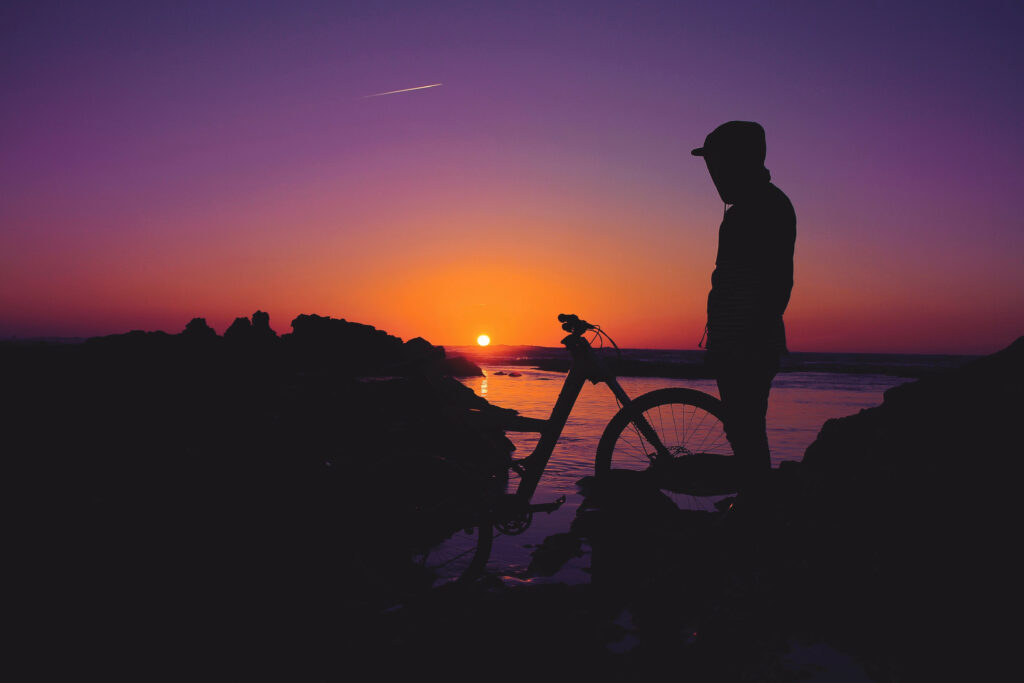
Making the decision to cycle back home to Greece wasn’t that spontaneous. Choosing to travel Europe by bike came as a sudden thought one day and gradually grew. I guess that different people have different reasons why they choose to travel by bike. From a simple thought, it becomes an idea that you become so passionate about that you can’t get rid of it. Before I started, I never knew what to say when people were curious as to why I would cycle back to Greece from Ireland. I really didn’t know why I wanted to do it, but it just felt like the right thing to do. After 79 days of traveling across Europe, I still can’t tell you why I made that decision, but I can certainly tell you what I learned from a trip like this.
In my opinion, there are two factors that made this journey special. The first is the people I met along the way, the short but meaningful relationships you create with people while on the road that you wouldn’t have had the chance to meet otherwise is definitely something that positively marked my journey. I could narrate dozens of touching and exciting stories in relation to the people I met, but I would like to draw focus on the second factor that marked my journey as special: Seeing nature in all its glory. This brings me to a much less discussed issue around bike touring.
Thinking of nature these days comes hand in hand with the issue of environmental degradation. My recent graduation from the MSc “Environmental Policy” in University College Dublin and my internship with Zero Waste Alliance Ireland gave me the opportunity to delve into the importance of the zero waste philosophy. This was a crucial stimulus that led me to recording the different types of wastes that I came across along the way. Though I stated previously that I wouldn’t focus on people for this piece, I can’t talk about environmental degradation without adding into the equation the interaction that we as people have with our environment.
Unfortunately, humans pollute the environment through our consumer habits and our thoughtless waste management and disposal practices. Air pollution, light pollution and other types of pollution are often communicated poorly making it difficult for citizens to take action. However, I believe litter is much more easily understood as a type of pollution because we are confronted with visual personal responsibility. In an era where the European Union is setting ambitious goals to fight plastic pollution, boost recycling and move towards a circular economy, European countries still battle to keep the trash away from their ecosystems. Even if we are trying hard to promote the idea of Zero Waste and the circular economy, we still haven’t persuaded some citizens to do the minimum by not littering. Though it may be only a small percentage of people who practice this level of thoughtlessness, its important to remember that most trash needs anywhere from a couple of decades to thousands of years to decompose. The waste we produce will remain long after we’re gone, polluting the environment even after our own existence.
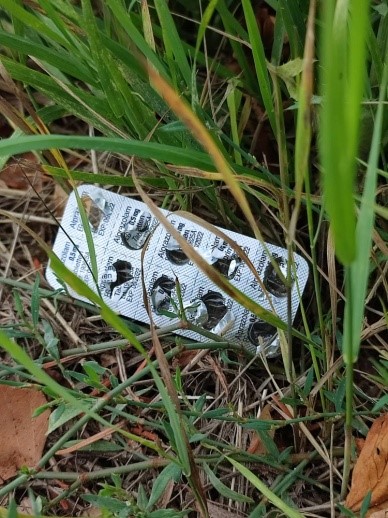
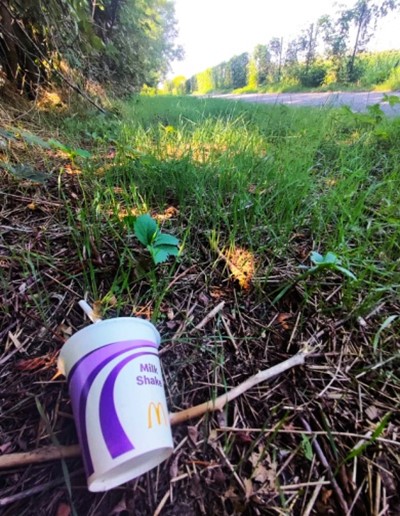
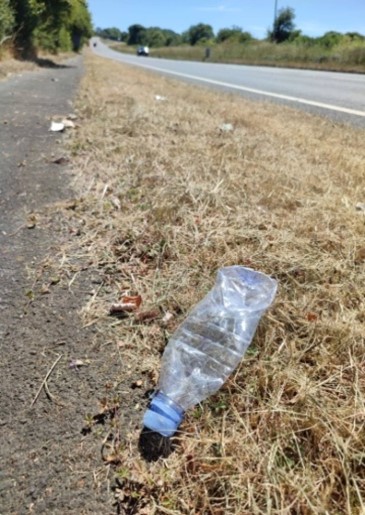
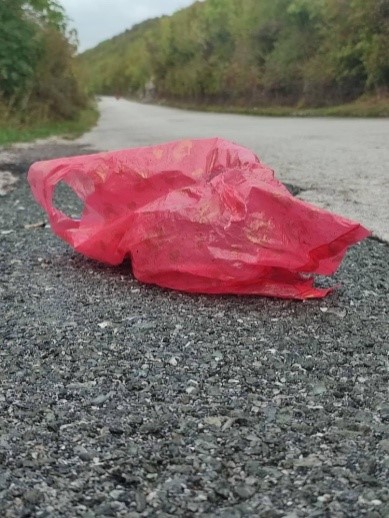


One of the advantages of travelling on a bike is the relatively slow pace in comparison to a motor-driven vehicle. This allows the opportunity to get closer to the environment around you and observe things that you wouldn’t otherwise pay attention to. As you might have guessed, the photos above display examples of litter waste that people left behind which I encountered along my way. The speed of a car, a train or a motorcycle doesn’t give you the opportunity to process and truly understand how much rubbish is gathered on the side of the road. In contrast, when you cycle for a couple of hours each day, it is difficult to turn a blind eye to such a big problem. From the magnificent mountains of Wales to some of the highest peaks of the Alps, and all the way down to the Dalmatian coast and the rest of the Balkans, one thing these contrasting landscapes had in common was the litter. Throughout my journey, I crossed 13 countries, each one of them unique in their own beauty. As I climbed up mountains, cycled next to some of the most characteristic rivers and lakes of Europe and acclimatized myself to varying temperatures and climate phenomena, traces of human existence were always there in the form of a plastic bottle, an empty packet of cigarettes or a “disposable” face mask tangled in the branches of a bush.

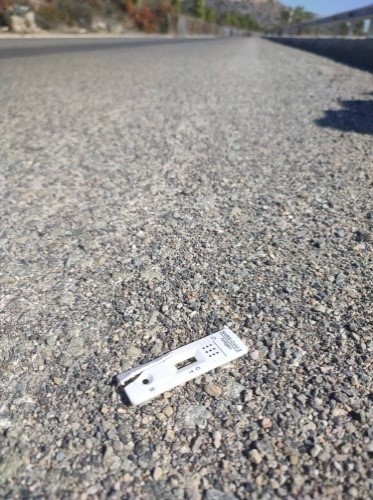
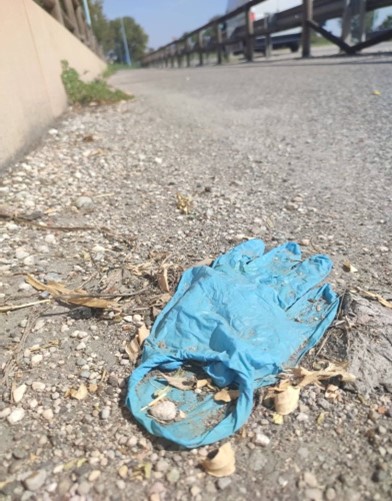
Face masks and other personal protective equipment are scattered in the ditches along the roads to remind us that the Covid-19 pandemic, apart from being a major health crisis, led to an environmental crisis due to the production of millions of single-use items. After a couple of weeks of cycling, I stopped seeing the waste for “simply waste” and I started observing the patterns in different types of waste streams. I started reflecting on the fact that, apart from personal responsibility, producer responsibility (the responsibility of the corporations that produce these products) is also crucial to keep in mind. I had read brand statistics in the past, claiming that only a few corporations were responsible for generating the biggest percentage of waste (Coca-Cola among these giants), and this trip came to confirm these statistics. Globalization has facilitated the trade of goods and has made it easier for people to fall into negative consumer habits. The same pattern of branded beverages, fast food, cigarettes and other popular goods were constantly being repeated, like an endless patchwork quilt of litter. When it comes to waste disposal, the blame is often placed upon individuals acting irresponsibly. We can’t solely burden these individuals with the blame however, as big corporations such as Nestle, Coca-Cola and Unilever, which are among the biggest plastic producers globally, profiteer with the production of such goods. Most of the items I want to bring attention to are single use, meaning that the actual usage of the product is only a tiny fraction of their life span. Along my way, I would often run into old packaging that dated from before the year 2000. Everywhere there was waste, but the quantity of it depended on different factors. For example, busy roads were covered with trash, while regional ones and smaller paths, where access was more difficult, had significantly less. Another factor was the country that I was visiting.
After I cycled through a couple of countries, it was obvious that the citizens of some countries were much more environmentally conscious than others. That differentiation in the amount of waste in the environment can be summarized in the gap between the Northern and Southern countries of Europe. The division of North and South Europe according to the development of the countries is a huge bet for the European Union. Having the opportunity to cycle from the north to the south made me better understand those differences and conclude that there is indeed a huge gap that is also being reflected in environmental policy and environmental awareness. I do not believe that there is an inherent tendency for some people to pollute, while others simply choose not to. It’s more about the priorities that a country sets. The countries that are economically wealthy and have managed to secure a certain level of comfort for their citizens, have the ability to continue with the implementation of more ambitious litter prevention strategies. On the other hand, countries that are still trying to deal with issues that directly affect the livelihood of their citizens will put the issue of littering at the bottom of their priorities list. Environmental sensitivity is indeed much more cultivated in the northern and central European countries, but that doesn’t make litter pollution a purely national issue.
One of the lessons I learned after crossing several countries is that borders can effectively control the transportation of people and goods between countries, but not pollution. Air pollution and climate change are major examples. However, plastic pollution is another form of pollution that can be easily expanded from one country to another, particularly via the oceans and rivers. Coastal countries are already dealing with that problem, as they not only have to manage the waste generated by local citizens but they also have to deal with the waste that is washed up on their coasts.

Cycling off the coast of the Balkans is a living example, as the varying types of waste that can be found on the beaches of these countries are often clearly from another country. Plastic waste is lightweight and very durable, giving it the perfect characteristics to float and travel for thousands of kilometres from one country to another. Of course, the garbage that embarks on international transportation through the oceans cannot take all the blame for the unpleasant situation that these countries are currently in. In the rest of Europe, I have been constantly observing carelessly discarded waste on the side of the road. In the Balkans, I would often see full garbage bags. Very often, a cliff on the side of a road will be converted into a rubbish dump with people throwing away their rubbish bags, building materials, entire furniture and household appliances. In addition, the overflowing dumpsters and the complete absence of recycling bins in some places brought to light the poor waste mismanagement by the governments of those countries.


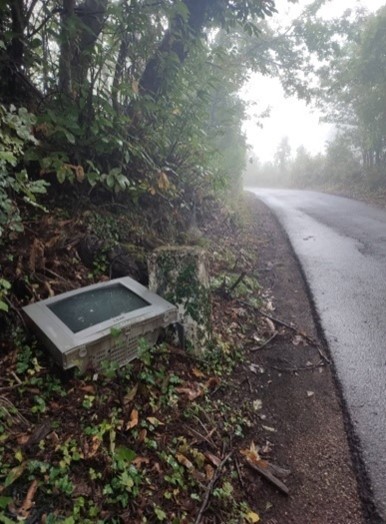
The amount of visible waste was clearly more in the Southern European countries, and very often the citizens of these so-called “developed” countries would leave their trash next to a bin that was full, creating a pile of trash in a beautiful park or a square. The difference in this case between that and a developing country is that in those countries, most of the time, civil servants would come the same day and clean the mess that people left behind.

After studying environmental issues and policy for a number of years, and the efforts that are happening globally through different conventions and agreements, the image of a Europe drowned in waste initially discouraged me from embarking on this journey. It’s one thing to read about litter pollution but facing it each day in every place I visited was another. I have become used to living in large cities within which I can have my own comfort and personal space that I can call home. For those 79 days however, nature was my home a lot of the time and I quickly realised that we don’t show the required respect for it. Travelling by bike is a unique opportunity not only to visit places and meet people, but to reacquire that connection with nature that a lot of people have lost due to our so called “modern” lifestyles. A journey like this reminded me that big steps have already been made for environmental protection, but much more action should take place at an international, national and personal level globally.
Have any thoughts to share? Get in touch with us!
